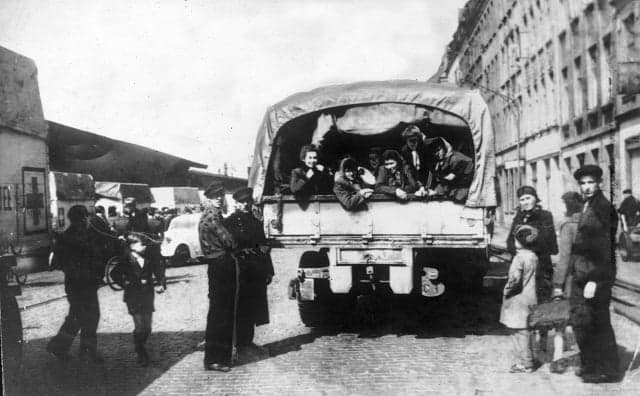Swedish university launches digital archive of Nazi concentration camp survivor testimonies

A digital archive of over 500 survivors’ testimonies from a Nazi concentration camp will be launched in the southern Swedish city of Lund later this week.
The archive includes interviews with women and children who were interned at the Ravensbrück camp in northern Germany, as well as documents belonging to survivors and Nazi officials.
The interviews were conducted "with the purpose of informing coming generations what had taken place," said historian Paul Rudny in the presentation of the archive.
Rudny added that the methods and timing of the interviews, all taken within 18 months of the camp's liberation, meant the testimonies were "relatively rare from an international perspective, confirmed by the fact that parts of the material were used in connection with trials after the war."
The 514 interviews reveal details of the slave labour, medical experiments, torture, and killing, not only in the Ravensbrück camp but also in several others, due to the fact that many prisoners were moved around between the camps.
READ ALSO: The forgotten Nazi concentration camp survivors in the forests of Småland
It has taken three years for researchers at Lund University to translate the interviews and put them online, and some of them are already available to read. In addition to the interviews, the archive includes other items the survivors brought with them to Sweden, including diaries, letters, and photographs, as well as some Nazi documents relating to the camp.
The Ravensbrück camp was set up in 1939 for women and children prisoners, including Jews, who made up around a fifth of the total number, as well as Roma people, Jehovah’s Witnesses, prostitutes, lesbians, and political prisoners.
In total 132,000 people were interned in the camp, of whom roughly 92,000 died. When the camp was liberated by Russian troops in April 1945, the Swedish government brought more than 20,000 survivors of Ravensbrück and other camps to Sweden and Denmark.
A Polish lecturer at Lund's university, Zygmunt Lakocinski, volunteered as a translator for the Polish-speaking Jewish women. Together with history professor Sture Bohlin, he set up a committee to document these interviews, a project funded by the Swedish government, and Lakocinski left the archives to the university after his death in 1987.
The below video shows footage of the survivors after the camp's liberation.
Comments
See Also
The archive includes interviews with women and children who were interned at the Ravensbrück camp in northern Germany, as well as documents belonging to survivors and Nazi officials.
The interviews were conducted "with the purpose of informing coming generations what had taken place," said historian Paul Rudny in the presentation of the archive.
Rudny added that the methods and timing of the interviews, all taken within 18 months of the camp's liberation, meant the testimonies were "relatively rare from an international perspective, confirmed by the fact that parts of the material were used in connection with trials after the war."
The 514 interviews reveal details of the slave labour, medical experiments, torture, and killing, not only in the Ravensbrück camp but also in several others, due to the fact that many prisoners were moved around between the camps.
READ ALSO: The forgotten Nazi concentration camp survivors in the forests of Småland
It has taken three years for researchers at Lund University to translate the interviews and put them online, and some of them are already available to read. In addition to the interviews, the archive includes other items the survivors brought with them to Sweden, including diaries, letters, and photographs, as well as some Nazi documents relating to the camp.
The Ravensbrück camp was set up in 1939 for women and children prisoners, including Jews, who made up around a fifth of the total number, as well as Roma people, Jehovah’s Witnesses, prostitutes, lesbians, and political prisoners.
In total 132,000 people were interned in the camp, of whom roughly 92,000 died. When the camp was liberated by Russian troops in April 1945, the Swedish government brought more than 20,000 survivors of Ravensbrück and other camps to Sweden and Denmark.
A Polish lecturer at Lund's university, Zygmunt Lakocinski, volunteered as a translator for the Polish-speaking Jewish women. Together with history professor Sture Bohlin, he set up a committee to document these interviews, a project funded by the Swedish government, and Lakocinski left the archives to the university after his death in 1987.
The below video shows footage of the survivors after the camp's liberation.
Join the conversation in our comments section below. Share your own views and experience and if you have a question or suggestion for our journalists then email us at [email protected].
Please keep comments civil, constructive and on topic – and make sure to read our terms of use before getting involved.
Please log in here to leave a comment.